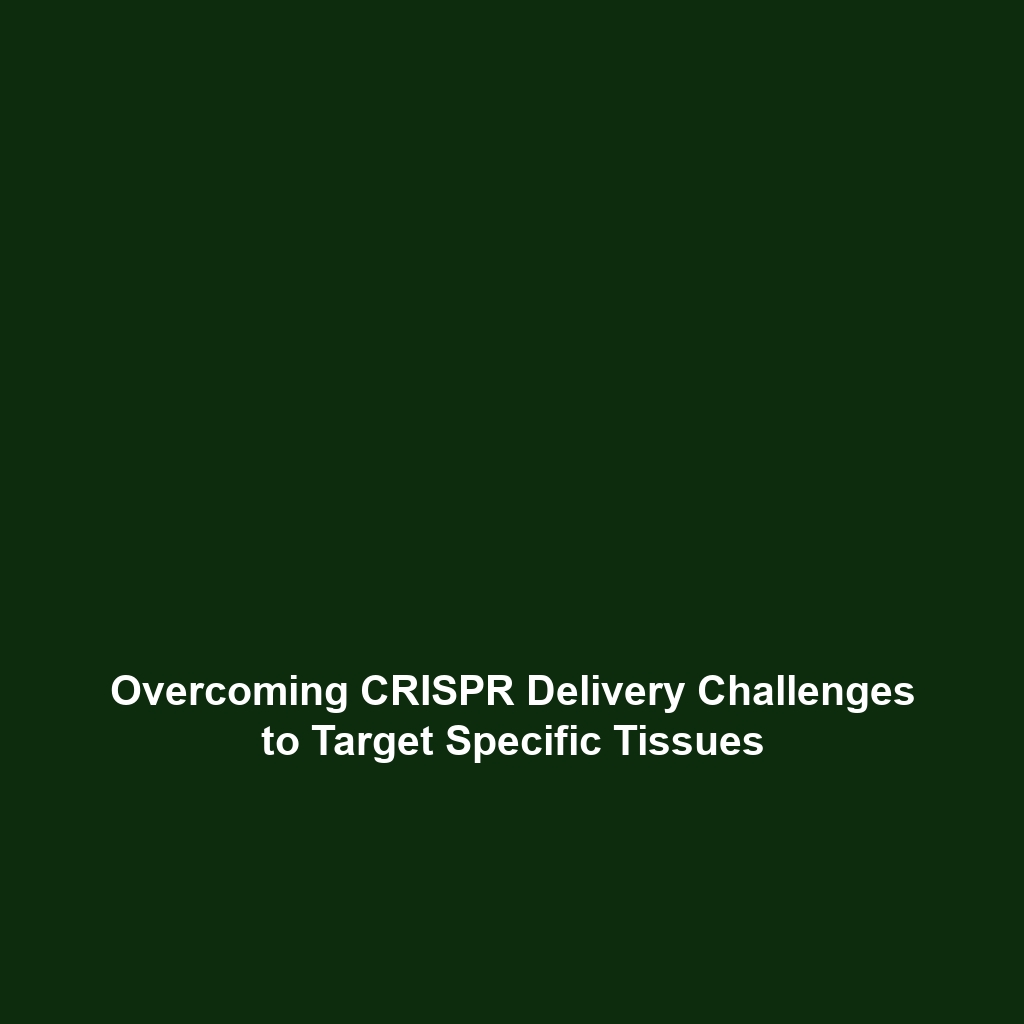Challenges in Delivering CRISPR Systems to Infected Cells Safely and Effectively
Introduction
CRISPR gene editing has revolutionized genetic engineering, presenting unprecedented opportunities for therapeutic interventions. However, one of the primary challenges in this field is delivering CRISPR systems to infected cells safely and effectively. The ability to precisely target and edit genetic material within infected cells significantly influences treatment efficacy for various diseases, making it a critical area of research. This article delves into the challenges that researchers face when attempting to deliver CRISPR systems to these targeted cells, and discusses the broader implications of this work within CRISPR gene editing.
Key Concepts
Understanding CRISPR Technology
CRISPR (Clustered Regularly Interspaced Short Palindromic Repeats) technology allows for precise editing of DNA sequences, enabling scientists to modify genes with high specificity. This technique has profound implications for treating infections, but effective delivery mechanisms remain a significant hurdle.
Challenges in Target Delivery
Delivering CRISPR systems specifically to infected cells is complicated by several factors, including:
- The need for accurate targeting to avoid off-target effects.
- Biological barriers posed by the immune system that may inactivate the CRISPR components.
- Variability in cellular uptake mechanisms across different cell types.
Applications and Real-World Uses
The challenges of delivering CRISPR systems effectively highlight the importance of innovative strategies in CRISPR gene editing. Notable applications include:
- Treatment of Viral Infections: Efficiently delivering CRISPR to cells infected with viruses such as HIV can help in eliminating persistent viral reservoirs.
- Genetic Disorders: Gene editing in somatic cells affected by genetic diseases can potentially correct mutations within infected tissues.
These applications emphasize how tackling the delivery challenges of CRISPR systems can lead to transformative healthcare solutions.
Current Challenges
Despite advancements, several challenges of delivering CRISPR systems to infected cells remain. Key issues include:
- Immune Reactions: The immune system can recognize CRISPR components as foreign, leading to a diminished response.
- Delivery Vehicle Limitations: Many existing delivery vehicles (like viral vectors) come with safety concerns and limited capacity.
- Scalability: Procedures needed for large-scale applications can be complex and resource-intensive.
Future Research and Innovations
Innovations in nanotechnology and synthetic biology offer promising solutions to the delivery challenges associated with CRISPR systems. Upcoming research focuses on:
- Developing new biodegradable nanoparticles for CRISPR delivery that reduce immune response.
- Creating more advanced viral vectors with improved specificity and efficiency.
- Utilizing machine learning for enhancing target identification and maximizing editing efficiency.
Conclusion
In summary, while the challenges in delivering CRISPR systems to infected cells safely and effectively pose significant barriers, ongoing research and innovations hold the potential to overcome these obstacles. As the field of CRISPR gene editing continues to evolve, addressing these challenges is crucial for therapeutic success. For further reading on related topics, explore our articles on real-world applications of CRISPR and future trends in gene therapy.

Leave a Reply